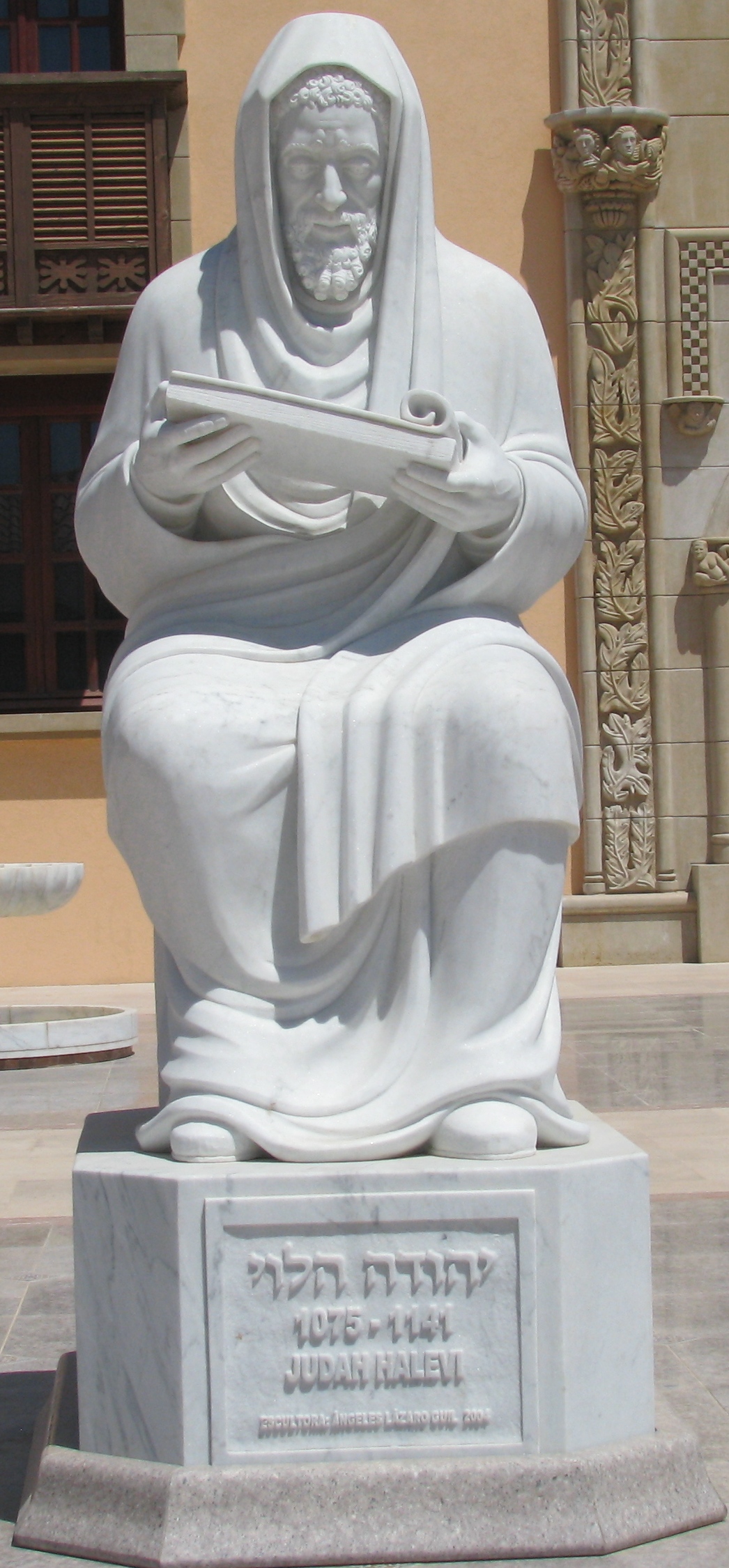
Biography
The great Jewish poet, philosopher, and theologian, Judah ben Samuel Halevi (c. 1075-–1141) was the only son of a wealthy Spanish Jewish family, most likely born in Toledo. Toledo was under Muslim rule until its conquest by the Christian king, Alfonso VI, in 1085, and produced a large number of prominent Jewish scholars, poets, scientists, and statesmen. It is possible that Halevi was educated for some time in Lunena, under the Talmudist Isaac Alfasi. In any event, his schooling qualified him as a rabbi. He was also familiar with Arabic literature and with Greco-Arabic science and philosophy.
The precarious balance resulting from the division of Spanish territory into quarrelling Christian kingdoms in the North and Muslim principalities, or Taifas, in the South, underpinned what is known in Spanish as the convivencia; a transient but creative period of tolerant co-existence among the three monotheistic religions in Spain. Beginning in the tenth century, the convivencia is sometimes described as a Golden Age for Spanish Jewry. The delicate fabric of the convivencia, however, had already begun to fray with a massacre of Jews by zealous Muslims in Granada in 1066, and in the mid-twelfth century, a few years after Halevi’s death, the convivencia ceased altogether with the conquest of Muslim Spain by the Almohades, invading Berbers who practiced an intolerant form of Islam.
Poetry was especially prestigious among the Spanish nobility in Halevi’s generation, which inspired an influential school of Hebrew poetry in Granada with Moses ibn Ezra then at its head. The new Hebrew poetry adapted and transformed the meters and rhyming schemes of Arabic poetry, but also employed biblical language. This poetry, moreover, no longer confined itself to religious matters, but also treated secular themes, giving rise to what Halevi’s biographer Hillel Halkin calls the Hebrew “poet-drinker” and “poet-lover.”
As an adolescent, Halevi wrote a Hebrew ode of introduction to Moses ibn Ezra, in which he conjures a vision of poetic bliss and intellectual friendship. Moses Ibn Ezra declared in response, “Lo, from Se’ir [Christendom] he shines forth to illumine/the length and breadth of the world,” and invited Halevi to enjoy his hospitality in Granada. Halevi duly found his way to Granada, remaining in the city and forming close friendships with the circle of Hebrew poets thriving there. He left only in 1090, when the city fell to the Almohades. Just three years later, soldiers of the First Crusade devastated Jewish communities across Christian Europe. Halevi wrote, “Between the armies of Se’ir [the Christians] and Kedar [the Muslims]/ My army perishes and is lost.”
For many years Halevi wandered about Spain, with significant periods spent in Lucena, Seville, Toledo, and Córdoba. While it is difficult to establish a precise chronology of these years, it is known that he studied and practiced medicine. Halevi’s life, though itinerant, appears for the most part to have been comfortable and abundant in friends; he cherished his only daughter and grandson, was widely respected as a physician, and was increasingly revered as a national poet. About one thousand Hebrew poems ascribed to him are extant, many considered among the greatest Hebrew poems of the Middle Ages, and, indeed, ever.
As Halevi grew older, his work turned to political and philosophical discussions. He also began to experience a longing both traditionally Jewish and markedly absent in the Jewish literature of the generations preceding him, namely the desire to effect a return to Zion and Jerusalem. His most famous poem begins, “My heart is in the East, and I in uttermost West… / How can I find savor in my food? How shall it be sweet to me/ How shall I render my vows and bonds, while yet/ Zion lies under the fetters of Edom [Christendom], and I in Arab chains?”
The final decade of Halevi’s life, spanning c.1130 to 1140, was spent largely in Córdoba. He continued to revise his lengthy masterwork, the Kuzari [Kitab al Khazari], a dialogue touching on philosophy, politics, and Judaism, and subtitled “The book of refutation and proof on behalf of the most despised religion.”
Taken as a whole, the Kuzari presents a prophecy-focused restatement of many of the central ideas of Judaism, and an apparent rejection of Aristotelian and Neoplatonic influences on religious thought. Rather than adopting the creed of political quietism and self-improvement characteristic of Halevi’s presentation of the philosophers, the Jewish sage of the Kuzari resolves to journey to Jerusalem, proclaiming, that “Jerusalem can only be rebuilt when Israel yearns for it to such an extent that they embrace her stones and dust.”
Halevi’s intention, too, was to leave Spain for Jerusalem, a city then in Crusader hands and without a Jewish community. The Kuzari had all but announced Halevi’s departure as a religious act. Given his renown and stature, it was also understood as the defection of one of Spanish Jewry’s favorite sons.
In 1140, at the age of 65 or 67, Halevi left family, friends and Spain, setting sail for Alexandria en route to Jerusalem. Received with adulation by the Jews of Alexandria, he remained in Egypt for almost a year, before again setting sail for Palestine sometime in May 1141. By October, letters of friends report Halevi’s death under unknown circumstances. It is not clear whether he ever reached Jerusalem. In subsequent Jewish history, his decision to go has taken on more meaning than whether he actually arrived.
For additional biographical information, see also:
Hillel Halkin, Yehuda Halevi, Schocken, 2010
Raymond P. Scheindlin, The Song of the Distant Dove: Judah Halevi’s Pilgrimage, Oxford, 2008